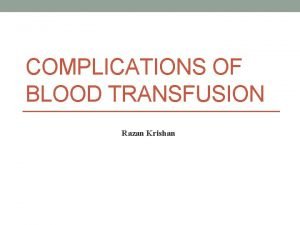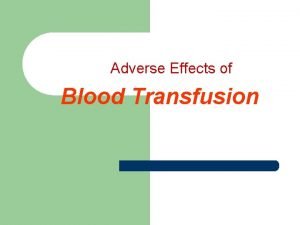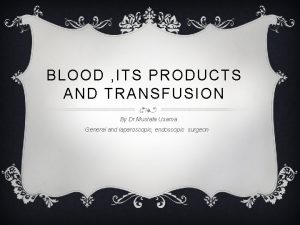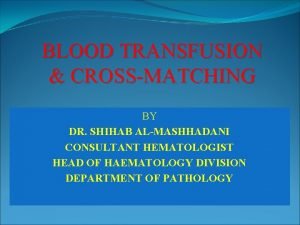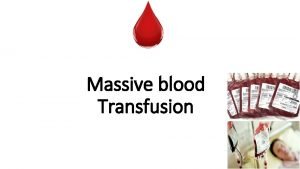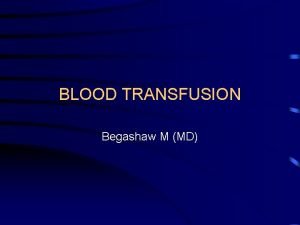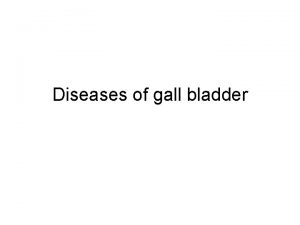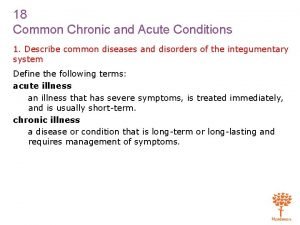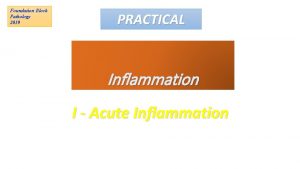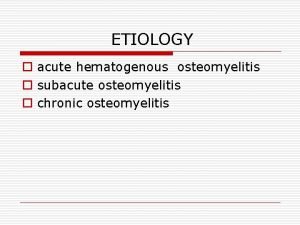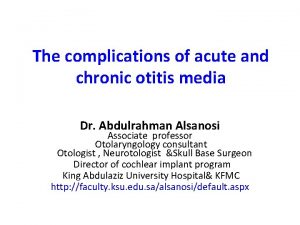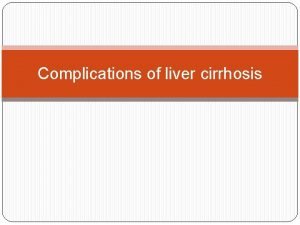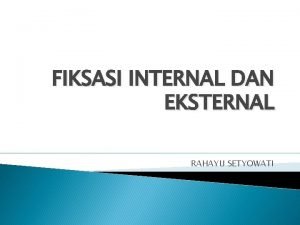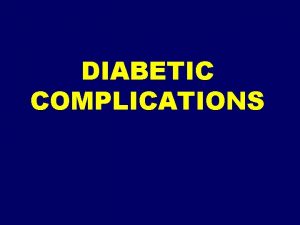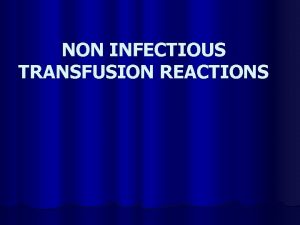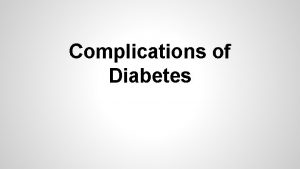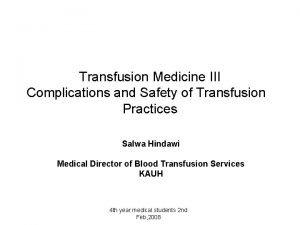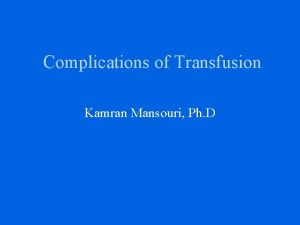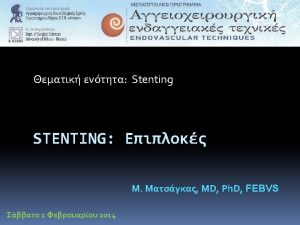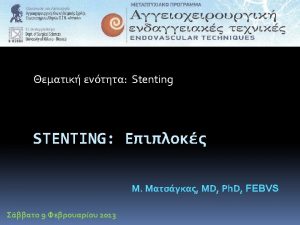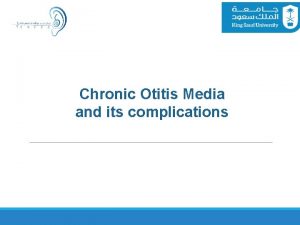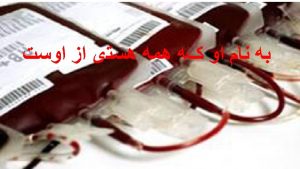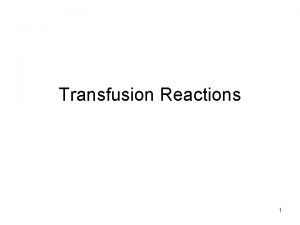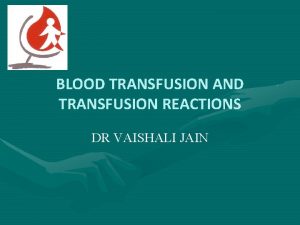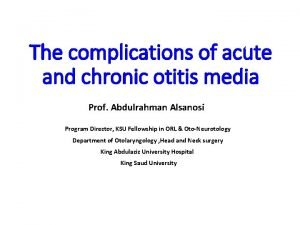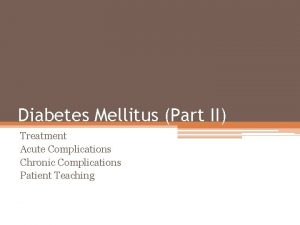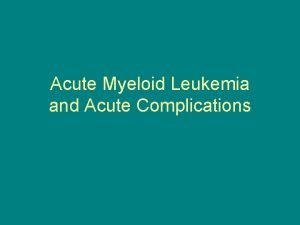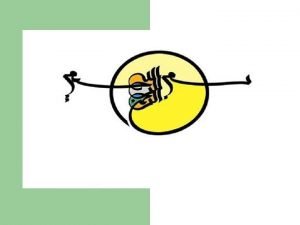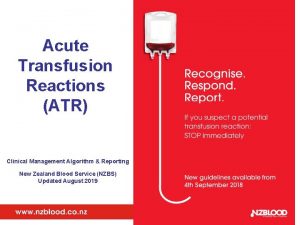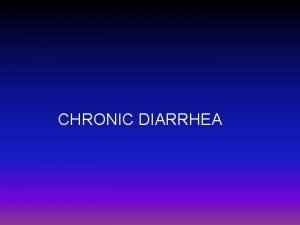Transfusion Complications Acute Transfusion Reactions ATRs Chronic Transfusion

























- Slides: 25

Transfusion Complications Acute Transfusion Reactions (ATR’s) • Chronic Transfusion Reactions • Transfusion related infections •

Acute Transfusion Reactions Hemolytic Reactions (AHTR) Febrile Reactions (FNHTR) Allergic Reactions TRALI Coagulopathy with Massive transfusions Bacteremia • • •

Frequency of Transfusion Reactions Adverse Effect Frequency Comments Acute Hemolytic Rxn 1 in 25, 000 Red cells only Anaphylactic hypotensive 1 in 150, 000 Including Ig. A Febrile Nonhemolytic 1 in 200 Common Allergic 1 in 1, 000 Common Delayed Hemolytic 1 in 2, 500 Red cells only RBC alloimmunization 1 in 100 Red cells only WBC/Plt alloimmunization 1 in 10 WBC and Plt only

Acute Hemolytic Transfusion Reactions (AHTR) Occurs when incompatible RBC’s are transfused into a recipient who has pre-formed antibodies (usually ABO or Rh) Antibodies activate the complement system, causing intravascular hemolysis Symptoms occur within minutes of starting the transfusion This hemolytic reaction can occur with as little as 1 -2 cc of RBC’s Labeling error is most common problem Can be fatal • • •

Symptoms of AHTR High fever/chills Hypotension Back/abdominal pain Oliguria Dyspnea Dark urine Pallor • •

What to do? If an AHTR occurs STOP TRANSFUSION ABC’s Maintain IV access and run IVF (NS or LR) Monitor and maintain BP/pulse Give diuretic Obtain blood and urine for transfusion reaction workup Send remaining blood back to Blood Bank • •

Blood Bank Work-up of AHTR Check paperwork to assure no errors Check plasma for hemoglobin DAT Repeat crossmatch Repeat Blood group typing Blood culture • • •

Labs found with AHTR Hemoglobinemia • Hemoglobinuria • Positive DAT • Hyperbilirubinemia • Abnormal DIC panel •

Monitoring in AHTR Monitor patient clinical status and vital signs Monitor renal status (BUN, creatinine) Monitor coagulation status (DIC panel– PT/PTT, fibrinogen, D-dimer/FDP, Plt, Antithrombin-III) Monitor for signs of hemolysis (LDH, bili, haptoglobin) • •

Febrile Nonhemolytic Transfusion Reactions (FNHTR) Definition--Rise in patient temperature >1°C • (associated with transfusion without other fever precipitating factors) Occurs with approx 1% of PRBC transfusions and • approx 20% of Plt transfusions FNHTR caused by alloantibodies directed against HLA • antigens Need to evaluate for AHTR and infection •

What to do? If an FNHTR occurs STOP TRANSFUSION • Use of Antipyretics—responds to Tylenol • Use of Corticosteroids for severe reactions • Use of Narcotics for shaking chills • Future considerations • May prevent reaction with leukocyte filter – Use single donor platelets – Use fresh platelets – Washed RBC’s or platelets –

Washed Blood Products PRBC’s or platelets washed with saline • Removes all but traces of plasma (>98%) • Indicated to prevent recurrent or severe reactions • Washed RBC’s must be used within 24 hours • RBC dose may be decreased by 10 -20% by washing • Does not prevent GVHD •

Allergic Nonhemolytic Transfusion Reactions Etiology • May be due to plasma proteins or blood – preservative/anticoagulant Best characterized with Ig. A given to an Ig. A deficient – patients with anti-Ig. A antibodies Presents with urticaria and wheezing • Treatment • Mild reactions—Can be continued after Benadryl – Severe reactions—Must STOP transfusion and may require – steroids or epinephrine Prevention—Premedication (Antihistamines) •

TRALI Transfusion Related Acute Lung Injury Clinical syndrome similar to ARDS • Occurs 1 -6 hours after receiving plasma- • containing blood products Caused by WBC antibodies present in donor • blood that result in pulmonary leukostasis Treatment is supportive • High mortality •

Massive Transfusions Coagulopathy may occur after transfusion of • massive amounts of blood (trauma/surgery) Coagulopathy is caused by failure to replace • plasma See electrolyte abnormalities • Due to citrate binding of Calcium – Also due to breakdown of stored RBC’s –

Bacterial Contamination More common and more severe with platelet • transfusion (platelets are stored at room temperature) Organisms • Platelets—Gram (+) organisms, ie Staph/Strep – RBC’s—Yersinia, enterobacter – Risk increases as blood products age (use fresh • products for immunocompromised)

Chronic Transfusion Reactions Alloimmunization • Transfusion Associated Graft Verses Host • Disease (GVHD) Iron Overload • Transfusion Transmitted Infection •

Alloimmunization Can occur with erythrocytes or platelets • Erythrocytes • Antigen disparity of minor antigens (Kell, Duffy, Kidd) – Minor antigens D, K, E seen in Sickle patients – Platelets • Usually due to HLA antigens – May reduce alloimmunization by leukoreduction (since – WBC’s present the HLA antigens)

Transfusion Associated GVHD Mainly seen in infants, BMT patients, SCID • Etiology—Results from engraftment of donor • lymphocytes of an immunocompetent donor into an immunocompromised host Symptoms—Diarrhea, skin rash, pancytopenia • Usually fatal—no treatment • Prevention—Irradiation of donor cells •

Transfusion Associated Infections Hepatitis C Hepatitis B HIV CMV can be diminished by leukoreduction, which – is indicated for immunocompromised patients • •

Prevention Leukocyte Depletion Filter Gamma Irradiation CMV Negative Single Donor Platelets (Apheresis) Febrile Transfusion Reactions X 1 X Alloimmunization X X CMV ? 2 Transfusion Related GVHD X X 1 In PRBC transfusion 2 Leukocyte Reduction by filtration may be an alternative to CMV-negative blood

Summary Blood Components • Indications – Considerations – Preparation and Administration of blood • products Acute and chronic transfusion reactions •

Transfusion Reaction Summary AHTR can be fatal • Stop the Transfusion • Monitor for symptoms and complete evaluation • FNHTR is a diagnosis of exclusion • TRALI (ARDS-like reaction) • Chronic Transfusion reactions • Prevention methods – using filters, irradiation and • premedication


 Calcium infusion protocol
Calcium infusion protocol Complications of blood transfusion
Complications of blood transfusion Blood transfusion complications
Blood transfusion complications Blood transfusion complications
Blood transfusion complications Massive transfusion complication
Massive transfusion complication Complication of blood transfusion
Complication of blood transfusion Centrifuged
Centrifuged Massive transfusion complication
Massive transfusion complication Blood transfusion requirements
Blood transfusion requirements Hetrotropia
Hetrotropia Phoenix abscess
Phoenix abscess Cardinal sign of inflammation
Cardinal sign of inflammation 18 common chronic and acute conditions
18 common chronic and acute conditions Acute cholecystitis vs chronic cholecystitis
Acute cholecystitis vs chronic cholecystitis Acute vs chronic heart failure
Acute vs chronic heart failure Pattern of acute inflammation
Pattern of acute inflammation Acute subacute chronic
Acute subacute chronic Acute and chronic
Acute and chronic Chemical reactions section 2 classifying chemical reactions
Chemical reactions section 2 classifying chemical reactions Chemical reactions section 3 reactions in aqueous solutions
Chemical reactions section 3 reactions in aqueous solutions Section 2 classifying chemical reactions
Section 2 classifying chemical reactions Chemistry unit 5 reactions balancing reactions worksheet
Chemistry unit 5 reactions balancing reactions worksheet Example of oxidation reduction reaction
Example of oxidation reduction reaction Complications of otitis media
Complications of otitis media Why does liver disease cause splenomegaly
Why does liver disease cause splenomegaly Closed reduction external fixation
Closed reduction external fixation

